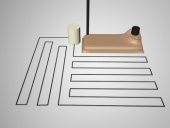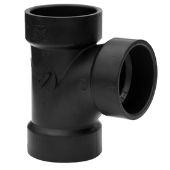
 4
4




New location. Zone 6b, acid soil, 30+ inches of water per year.
https://growingmodernlandraces.thinkific.com/?ref=b1de16
Growingmodernlandraces.com affiliate
 4
4




Walk Soft, Think Hard.
Zone 6b
 4
4




New location. Zone 6b, acid soil, 30+ inches of water per year.
https://growingmodernlandraces.thinkific.com/?ref=b1de16
Growingmodernlandraces.com affiliate
 4
4




Walk Soft, Think Hard.
Zone 6b
 5
5




-Nathanael




New location. Zone 6b, acid soil, 30+ inches of water per year.
https://growingmodernlandraces.thinkific.com/?ref=b1de16
Growingmodernlandraces.com affiliate




Good idea if the tanks were outside. I wouldn't even need to convert to electricity, just have a double system, horizontal movement. Windmill blades turn another blade under the water.Nathanael Szobody wrote:You could have a windmill circulate your water.
New location. Zone 6b, acid soil, 30+ inches of water per year.
https://growingmodernlandraces.thinkific.com/?ref=b1de16
Growingmodernlandraces.com affiliate








New location. Zone 6b, acid soil, 30+ inches of water per year.
https://growingmodernlandraces.thinkific.com/?ref=b1de16
Growingmodernlandraces.com affiliate
 3
3




"You must be the change you want to see in the world." "First they ignore you, then they laugh at you, then they fight you, then you win." --Mahatma Gandhi
"Preach the Gospel always, and if necessary, use words." --Francis of Assisi.
"Family farms work when the whole family works the farm." -- Adam Klaus
 4
4




Nails are sold by the pound, that makes sense.
Soluna Garden Farm -- Flower CSA -- plants, and cut flowers at our farm.
 2
2




 5
5




Walk Soft, Think Hard.
Zone 6b
 2
2




Walk Soft, Think Hard.
Zone 6b
 3
3




"The only thing...more expensive than education is ignorance."~Ben Franklin. "We can easily forgive a child who is afraid of the dark; the real tragedy of life is when men are afraid of the light." ~ Plato
 8
8




-Nathanael

 5
5




How Permies works: https://permies.com/wiki/34193/permies-works-links-threads
My projects on Skye: The tree field, Growing and landracing, perennial polycultures, "Don't dream it - be it! "
 3
3




New location. Zone 6b, acid soil, 30+ inches of water per year.
https://growingmodernlandraces.thinkific.com/?ref=b1de16
Growingmodernlandraces.com affiliate
 3
3




I will cut the tops off the IBC totes (waste stream), turn them over and punch holes in the bottom for the net cups. In that sense it would act just like hydroponics. I've been experimenting with Kratky hydroponics and natural nutrients for a while. I'm confident it can be adapted to this kind of system.Carla Burke wrote:Unless maybe the plants float in a flatbed 'barge', with a screen bottom. I'm sure there has to be a way
I do plan to put something in there to clean the tanks. Thank you for the ideas!Carla Burke wrote:Low oxygen-guzzling fish, possibly including the aforementioned, plus mussels, crawfish, snails, and shrimp are all possibilities. The mussels also come with the bonus of doing a great job of cleaning up ponds.
This. Yes. Not all my ideas will work, or work as planned, but with enough brains added to the pile something can usually be worked out. There is always a solution.Carla Burke wrote:It's just something I'm really itching to figure out. Maybe we can all find our own best paths, by getting all the ideas out there, that we can.
New location. Zone 6b, acid soil, 30+ inches of water per year.
https://growingmodernlandraces.thinkific.com/?ref=b1de16
Growingmodernlandraces.com affiliate
 1
1




Nothing ruins a neighborhood like paved roads and water lines.
 3
3








Don't have chickens yet, but that's a great idea! I was thinking of feeding the duckweed to chickens, but frogs would probably work just as well. One more thing to consider. :) I'm getting quite a list. Thanks!William Bronson wrote:I think you could stock the tank with carp of some kind, goldfish, or koi for example, and let them be.
...
Another thought, amphibians.
As polliwogs and tadpoles they will be small, aquatic and omnivorous, as they mature they become large enough to eat, air breathing and carnivorous.
This bypasses the oxygenated water bottleneck.
It does create a need for more animals to feed them.
Pests are the obvious resource, cannibalism works as well, plus , if you keep chickens nearby, the emerging frogs and toads become self dispensing chicken feed, and you needn't worry about feeding them as adults.
Hopefully there will be survivors and they will procreate.
New location. Zone 6b, acid soil, 30+ inches of water per year.
https://growingmodernlandraces.thinkific.com/?ref=b1de16
Growingmodernlandraces.com affiliate
 2
2




New location. Zone 6b, acid soil, 30+ inches of water per year.
https://growingmodernlandraces.thinkific.com/?ref=b1de16
Growingmodernlandraces.com affiliate
 2
2




Country oriented nerd with primary interests in alternate energy in particular solar. Dabble in gardening, trees, cob, soil building and a host of others.
 3
3




I thought that's what I said. Two tanks, tops inverted with plants on them, roots down into the same water the fish are in. I guess I wasn't clear enough. Not planning on "fencing" them away from each other, though. Not sure what you mean by that. One big tank split down the middle? I'm planning on linking two 250 or 300 gallon IBC totes, so technically room for 10-20 full sized fish. The fish will only be in one tank, except for the cleaner fish. Both will have plant rafts and I'll try to choose plants that put oxygen into the water as well as choosing fish that can eat plant roots.C. Letellier wrote:
Now your other option is eliminate pumping totally, grow plants in the top half and fish in the lower half and fence them away from each other. There are a number of you tube videos on this type of system also. Most of these systems are bigger tanks though so one end of the tank can be devoted to letting the fish surface and feed etc.
New location. Zone 6b, acid soil, 30+ inches of water per year.
https://growingmodernlandraces.thinkific.com/?ref=b1de16
Growingmodernlandraces.com affiliate
 2
2








Weeds are just plants with enough surplus will to live to withstand normal levels of gardening!--Alexandra Petri












 4
4




How Permies works: https://permies.com/wiki/34193/permies-works-links-threads
My projects on Skye: The tree field, Growing and landracing, perennial polycultures, "Don't dream it - be it! "




Lorinne Anderson: Specializing in sick, injured, orphaned and problem wildlife for over 20 years.
















How Permies works: https://permies.com/wiki/34193/permies-works-links-threads
My projects on Skye: The tree field, Growing and landracing, perennial polycultures, "Don't dream it - be it! "




Which is actually something I've been considering. Depending on the circumstances (LOTS of different issues involved!) that could be part of their food.Caitlin Mac Shim wrote:I think the reason the fish are fenced away from the plants is cause they can have a tendency to eat the roots.
New location. Zone 6b, acid soil, 30+ inches of water per year.
https://growingmodernlandraces.thinkific.com/?ref=b1de16
Growingmodernlandraces.com affiliate









Caitlin Mac Shim wrote:What do you reckon is your main goal with the system? Like, do you hope you grow fish/crustaceans to eat (human consumption), or for feed (chickens/other) or plants for human consumption or animal feed, or is the idea to primarily grow plants to feed the fish, or all of these things? Or is it more a case of figuring out if a passive system could operate and then growing whatever works?
Caitlin Mac Shim wrote:Could something using gravity work? Like a drain in the bottom of the tank, which you can release to flush out some poo heavy water from the bottom, and the drop in water level allows fresh water to flow in at the top? As long as you didn’t replace too much water at once it shouldn’t be too much of a shock to the fish.
It’s not achieving circulation (without coming up with a way to clean and return the water to the top), however it would give you nutrient heavy water to use somewhere else, and if you had enough water catchment to feed the system, then the re-circulation of cleaned water might not be so necessary. Would depend a lot on water availability I guess. Aquaponics are often utilised to address water scarcity, but if you have plenty you could set it up as a kind of fertiliser production system?
New location. Zone 6b, acid soil, 30+ inches of water per year.
https://growingmodernlandraces.thinkific.com/?ref=b1de16
Growingmodernlandraces.com affiliate
 2
2




 And I appreciate that if it was that simple it would probably have already been done.
And I appreciate that if it was that simple it would probably have already been done.




The siphon could keep going indefinitely as long as the end of the hose is lower than the start and both are in the water. That way there's no need to have pipes between the tanks, the water gets mixed and oxygenated simultaneously (if mildly) and no pumps! All the tanks would need to have essentially the same water level and it's a much larger system, but well worth exploring.Caitlin Mac Shim wrote:But if you COULD get it to push uphill, then the trickle from the hose could also help oxygenate the water a bit...
New location. Zone 6b, acid soil, 30+ inches of water per year.
https://growingmodernlandraces.thinkific.com/?ref=b1de16
Growingmodernlandraces.com affiliate

















 1
1




it will create a continuous current
How Permies works: https://permies.com/wiki/34193/permies-works-links-threads
My projects on Skye: The tree field, Growing and landracing, perennial polycultures, "Don't dream it - be it! "




New location. Zone 6b, acid soil, 30+ inches of water per year.
https://growingmodernlandraces.thinkific.com/?ref=b1de16
Growingmodernlandraces.com affiliate
 4
4





 2
2




New location. Zone 6b, acid soil, 30+ inches of water per year.
https://growingmodernlandraces.thinkific.com/?ref=b1de16
Growingmodernlandraces.com affiliate

| I agree. Here's the link: http://stoves2.com |








